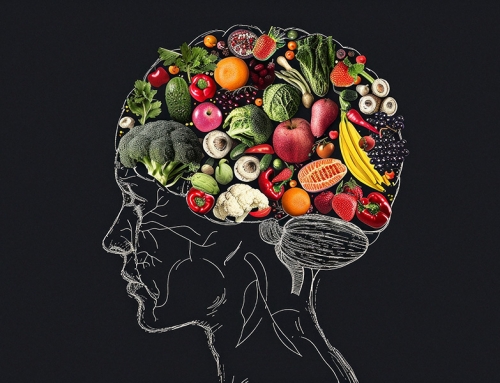Introduction
Gamification of education is a growth strategy that uses game design aspects in educational settings to boost learners’ motivation and engagement. ( Dichev et al.,2017 )3. The goal of gamification, a new development in study and practice, is to use people’s innate love of games to inspire motivation or engagement by incorporating game design features into situations that are not games. Gamification is widely understood to be a useful tool, particularly in the fields of health and wellbeing, for encouraging long-term system utilisation or promoting specific health behaviours. (Thiebes et al., 2018) 1. Overall, the main objective of using gamification in the context of health and well-being is to help people change particular health behaviours in a positive way that lasts by increasing their motivation. ( Stepanovic et al.,2018)2
Gamification in education is the practice of incorporating game design features and game-like experiences into the development of instructional materials. It has been adopted to support learning across a range of contexts and subject areas as well as to address associated attitudes, activities, and behaviours, including collaborative methods, self-directed learning, finishing assignments, making assessments simpler and more efficient, incorporating exploratory learning strategies, and boosting student creativity and retention. ( Caponetto et al.,2014)4
How does gamification work?
Gamification is a powerful strategy that harnesses elements of game design and mechanics to enhance nutrition education and behaviour change. Let’s delve into the effectiveness of gamification:
- Make learning enjoyable: By incorporating game-like elements such as challenges, levels, and interactive elements, gamification transforms learning into an enjoyable and immersive experience. It taps into our natural inclination for play and curiosity, making the learning process more engaging and memorable.
- Boost motivation: Gamification provides intrinsic and extrinsic motivators to drive participants’ engagement and progress. Elements like badges, points, leaderboards, and unlocking rewards create a sense of achievement and progression, keeping learners motivated and eager to continue their journey.
- Use a rewards system: Rewards act as incentives to encourage desired behaviors and outcomes. They can be virtual (e.g., badges, points, virtual currency) or tangible (e.g., certificates, physical prizes). Rewards help reinforce positive actions, boost motivation, and create a sense of accomplishment.
- Employ appropriate narratives: Stories and narratives add context and meaning to the learning experience. Gamification utilizes narratives to create immersive scenarios, relatable characters, and compelling plots that connect learners emotionally to the content. This helps facilitate learning and retention by making it more relatable and memorable.
- Utilize feedback: Feedback is a crucial element of gamification that provides learners with information about their progress, performance, and areas for improvement. Timely and constructive feedback helps learners understand their strengths and weaknesses, encourages self-reflection, and guides them towards continuous learning and improvement.
- Use experiential learning: Gamification often incorporates experiential learning, where learners actively engage in problem-solving, decision-making, and critical thinking. Through simulations, scenarios, and role-playing, learners can apply their knowledge and skills in a realistic context, promoting deeper understanding and long-term retention.
- Ensure sustainability: Gamification should be designed with sustainability in mind. This means creating a system that can be maintained and updated over time, adapting to the changing needs of learners. Regular updates, new challenges, and fresh content keep participants engaged and prevent the experience from becoming stagnant.
- Use of technology: Technology plays a significant role in gamification, providing the platform and tools to deliver interactive and immersive experiences. It can include mobile apps, online platforms, augmented reality, virtual reality, and other digital mediums that enhance the gamified learning environment.
- Practice is necessary for learning: Gamification often incorporates repetitive practice to reinforce learning. By providing learners with opportunities for repeated engagement and application of knowledge or skills, gamification promotes mastery and competence in a particular subject or domain.
- Competition is used: Competition can be a powerful motivator in gamification. Leaderboards, rankings, and challenges against others create a sense of competition and drive learners to excel. Healthy competition can inspire individuals to push their limits and strive for improvement.
- Collaboration is crucial: Collaboration is an essential aspect of gamification, fostering social interaction and cooperative learning. Team challenges, cooperative quests, and group discussions encourage learners to work together, share knowledge, and support each other’s learning journeys.
- Diversity is ensured: Gamification embraces diversity by accommodating different learning styles, preferences, and abilities. It provides multiple pathways for learners to achieve their goals, allowing them to choose their own learning paths and explore content at their own pace.
(Krishnamurthy et al., 2022)9
Game Design Elements
The fundamental building blocks of gamification applications are components of game design.(Deterding et al., 2011, Werbach and Hunter, 2012)( 5,6 ). The typical game design elements are (1) points, (2) badges, (3) leaderboards, (4) performance graphs, (5) meaningful stories, (6) avatars and (7) teammates. (Sailer et al., 2017)8
Advantages of gamification for health and well-being
There are seven potential benefits of gamification for health and well-being, and they are as follows:
- supporting intrinsic motivation (since games have been shown to motivate intrinsically);
- Broad accessibility through mobile technology and ubiquitous sensors;
- Broad appeal across audiences (since gaming has become mainstream);
- Broad applicability across health and well-being risks and factors; and
- Cost-benefit effectiveness of enhancing existing systems (versus building);
- Life fit (rearranging current activities rather than introducing new demands to people’s lives);
- Direct well-being assistance (through offering happy experiences).
Gamification should thus be promoted in order to reduce the triple burden of illnesses by increasing knowledge, altering individual and societal behaviour, and bringing about a healthier India. (Sarbadhikari & Sood, 2018)7
Conclusion
A long-standing difficulty in education has been maintaining learners’ motivation. Gamification in education is a strategy for raising motivation and engagement among students by integrating game design elements into the classroom. It is a widely used tool in various contexts that has enormous benefits. The fundamental blocks of gamification such as badges, points, leaderboards, and performance graphs make learning enjoyable, boost motivation, and increase student creativity and retention while embracing exploratory learning methodologies. Gamification involves the use of technology and a reward system along with the use of collaborative methods to support learning across a range of contexts and subject areas. With these benefits, gamification should be employed more frequently by practitioners and students to lower any barrier that hinders the learning process and boosts the submerged internal motivation of the learners eventually making learning more engaging.
References
- Schmidt-Kraepelin, M., Thiebes, S., Tran, M.C., and Sunyaev, A., “What’s in the Game? Developing a Taxonomy of Gamification Concepts for Health Apps”, in Proceedings of the 51st Hawaii International Conference on System Sciences (HICSS), Waikoloa, HI. 2018. //www.researchgate.net/publication/320170335_What’s_in_the_Game_Developing_a_Taxonomy_of_Gamification_Concepts_for_Health_Apps
- Stepanovic, Stefan & Mettler, Tobias. (2018). Gamification applied for health promotion: does it really foster long-term engagement? A scoping review. //www.researchgate.net/publication/326176188_Gamification_applied_for_health_promotion_does_it_really_foster_long-term_engagement_A_scoping_review
- Dichev, C., & Dicheva, D. (2017). Gamifying education: What is known, what is believed and what remains uncertain: A critical review. International Journal of Educational Technology in Higher Education, 14(1). //doi.org/10.1186/s41239-017-0042-5
- Caponetto, I., Earp, J., & Ott, M. (2014). Gamification and education: a literature review. In 8th European Conference on Games Based Learning (pp. 50–57). Germany: ECGBL. ISBN 978-1-910309-55-1. //books.google.co.in/books?hl=en&lr=&id=IedEBQAAQBAJ&oi=fnd&pg=PA50&ots=bG0g6W-h34&sig=p0tC7lX0us5YWqgsz9pIs4Kf1Hc&redir_esc=y#v=onepage&q&f=false
- K. Werbach, D. Hunter For the Win: How game thinking can revolutionize your business,Wharton Digital Press, Philadelphia (2012)
- Deterding, S., Dixon, D., Khaled, R., & Nacke, L. (2011). From Game Design Elements to Gamefulness: Defining “Gamification”. Paper presented at the 15th International Academic MindTrek Conference, Tampere. //dx.doi.org/10.1145/2181037.2181040.
- Sarbadhikari, S., & Sood, J. (2018). Gamification for nurturing healthy habits. The National Medical Journal of India, 31(4), 253. //doi.org/10.4103/0970-258x.258236
- Sailer, M., Hense, J. U., Mayr, S. K., & Mandl, H. (2017). How gamification motivates: An experimental study of the effects of specific game design elements on psychological need satisfaction. Computers in Human Behavior, 69(69), 371–380. //doi.org/10.1016/j.chb.2016.12.033
- Krishnamurthy, K., Selvaraj, N., Gupta, P., Cyriac, B., Dhurairaj, P., Abdullah, A., Krishnapillai, A., Lugova, H., Haque, M., Xie, S., & Ang, E. (2022). Benefits of gamification in medical education. Clinical Anatomy, 35(6). //doi.org/10.1002/ca.23916






Leave A Comment